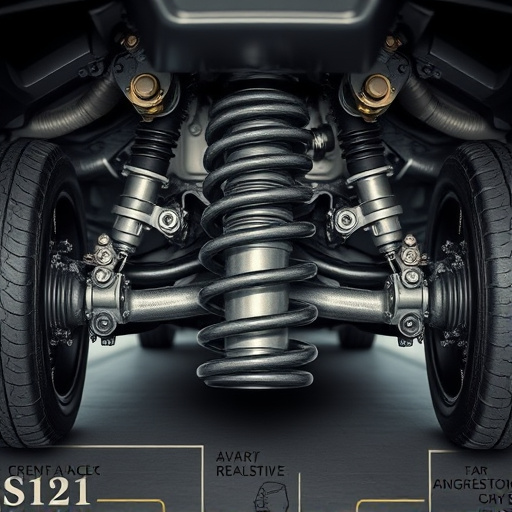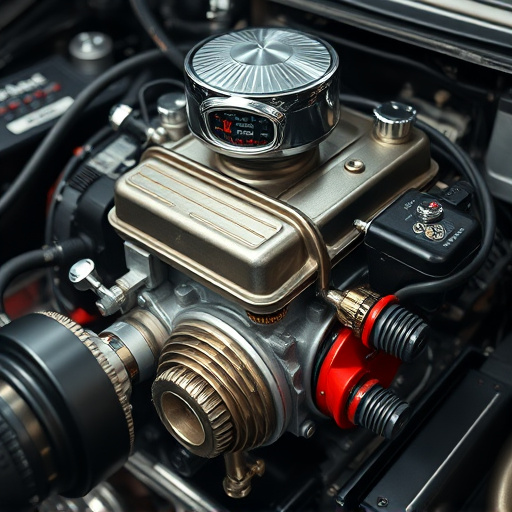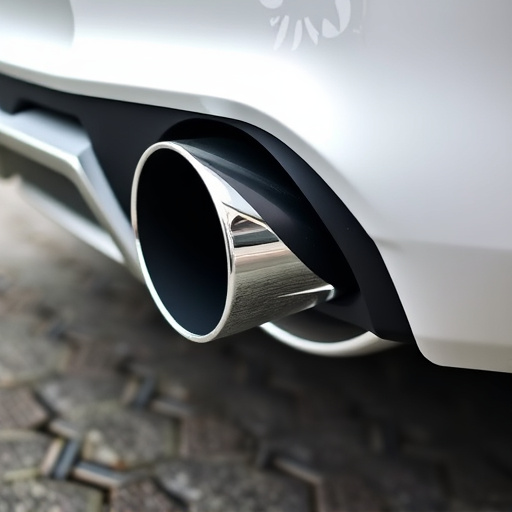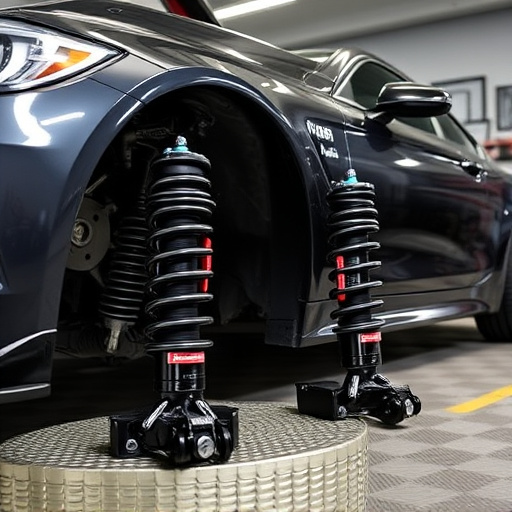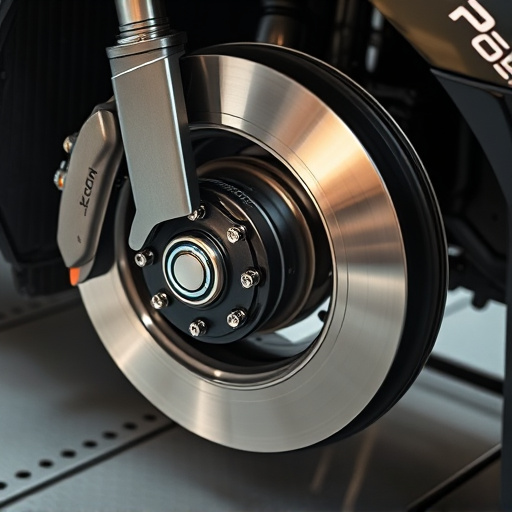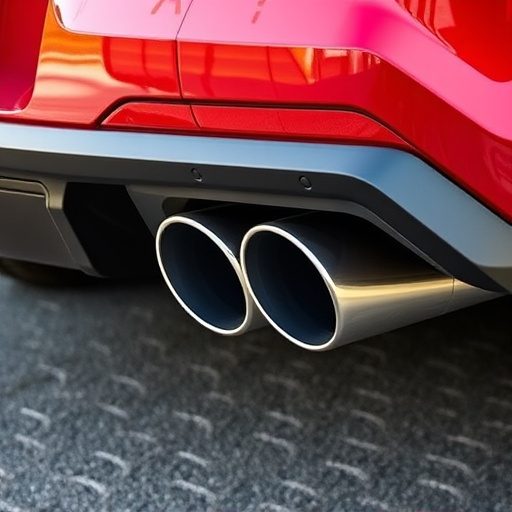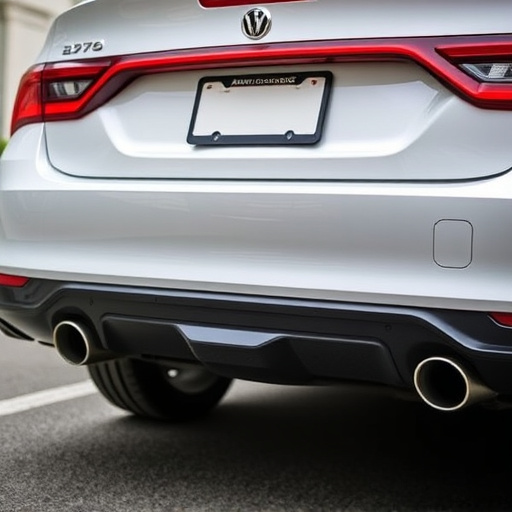Adjustable suspension systems offer vehicle owners precise control over ride height and handling dynamics, catering to diverse driving conditions from off-road adventures to track days. These systems, through customizable springs, shock absorbers, and control arms, optimize tire contact, enhance cornering precision, and prioritize either comfort or performance. Mechanics fine-tune settings for stability and customization, while accessible external adjustments empower owners to personalize their vehicles' behavior without specialized knowledge, ultimately enhancing driving experience.
“Unleashing optimal vehicle performance, adjustable suspension systems have emerged as a game-changer in automotive technology. This article delves into the intricate world of these dynamic systems, exploring their fundamentals and advantages. We dissect how mechanics fine-tune adjustments for peak efficiency, addressing challenges along the way. From enhancing handling to improving comfort, discover the science behind adjustable suspensions and their pivotal role in modern vehicle design.”
- Understanding Adjustable Suspension Systems: Basics and Benefits
- How Mechanics Optimize Performance Through Adjustability
- Common Challenges and Solutions in Adjustable Suspension Design
Understanding Adjustable Suspension Systems: Basics and Benefits
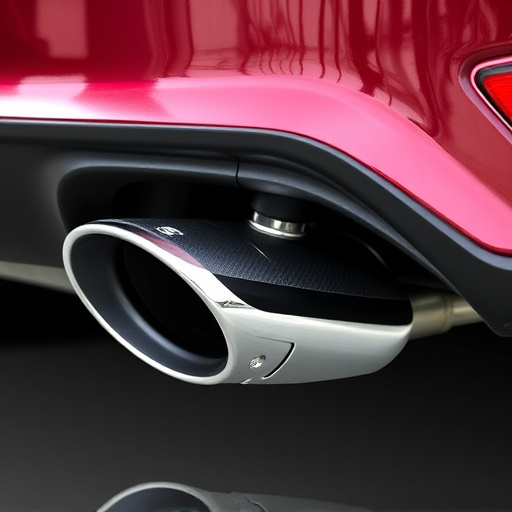
Adjustable suspension systems offer a unique advantage to vehicle owners by providing control over their ride height and handling dynamics. Unlike fixed suspension setups, these systems allow for customization, catering to various driving conditions and personal preferences. The basics involve an intricate network of springs, shock absorbers, and control arms that can be adjusted up or down, altering the car’s center of gravity and its interaction with the road surface.
The benefits are numerous. For off-road enthusiasts, lowering the suspension improves ground clearance, enabling navigation through challenging terrain. Track drivers appreciate the ability to fine-tune their setup for optimal cornering and stability. Additionally, adjustable suspensions can enhance fuel efficiency by optimizing tire contact for better grip, while also allowing for the installation of performance upgrades like air filter kits and cat-back exhaust systems without compromising handling.
How Mechanics Optimize Performance Through Adjustability

Mechanics understand that performance optimization isn’t a one-size-fits-all affair, especially when it comes to vehicles with adjustable suspension systems. By tweaking the settings on these advanced mechanisms, professionals can fine-tune the vehicle’s handling and response to various driving conditions. This adjustability allows for personalized configurations tailored to different terrains and driving styles.
For example, mechanics can alter spring rates, damping levels, and ride height to enhance cornering precision, reduce body roll, or prioritize a smoother ride. These adjustments impact not just the vehicle’s agility on twisty roads but also its overall stability and safety. Moreover, fine-tuning suspension settings can significantly affect the performance of critical components like brake pads and muffler tips, ensuring they function optimally under all circumstances.
Common Challenges and Solutions in Adjustable Suspension Design
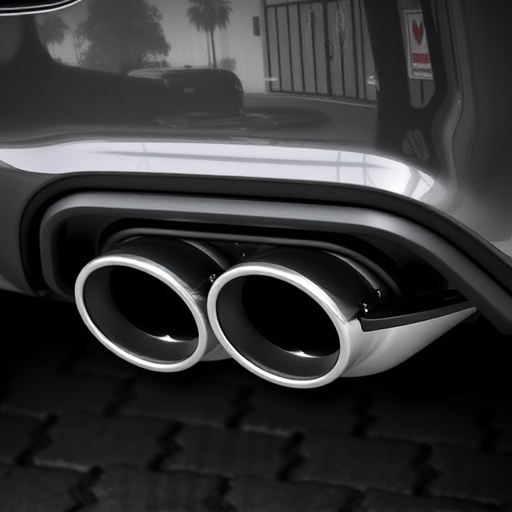
The design and implementation of an adjustable suspension system present several challenges that engineers must navigate. One major hurdle is achieving a balance between ride comfort and handling performance. Drivers often demand a smooth, comfortable ride, but also expect responsive handling, especially during cornering. Engineers strive to fine-tune suspension settings to accommodate these seemingly conflicting desires, ensuring the vehicle maintains stability while providing a comfortable drive.
Another challenge lies in creating an adjustable system that is user-friendly and accessible. Many systems offer external adjustments, allowing drivers to tweak settings without extensive mechanical knowledge. This accessibility promotes customization, enabling owners to tailor their vehicles’ behavior to their driving style and preferences. Moreover, considering compatibility with other critical components like exhaust systems, suspension kits, and brake rotors is essential, as these parts interact closely with the suspension, influencing overall vehicle dynamics and performance.
Adjustable suspension systems have evolved to offer vehicle owners unparalleled control over their driving experience. By understanding the mechanics behind these systems, we can appreciate how they enhance performance, catering to both daily driving and track-focused needs. While challenges exist in design and optimization, continuous advancements ensure that adjustable suspensions deliver superior handling and comfort, solidifying their place as a game-changer in automotive technology.






